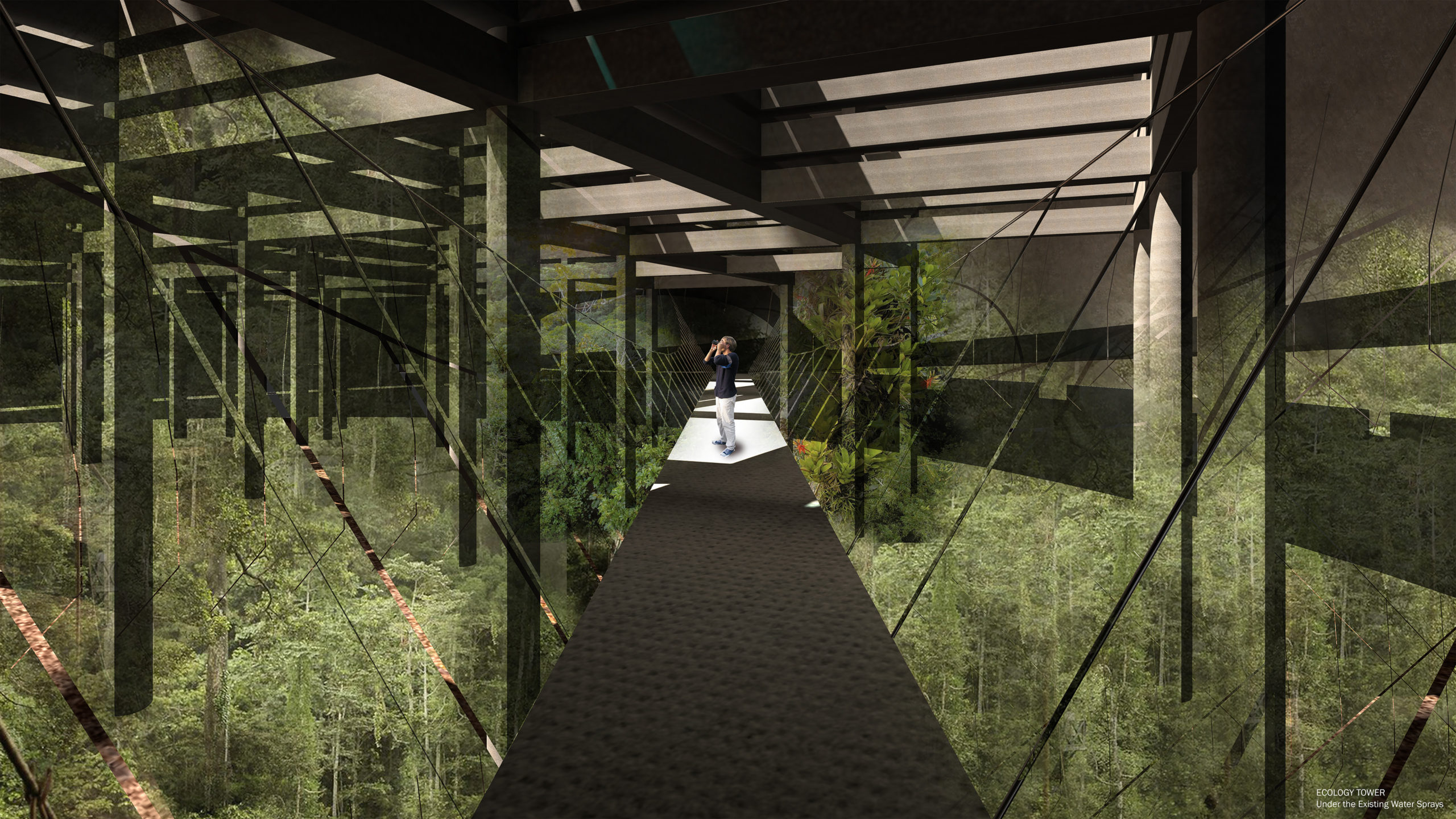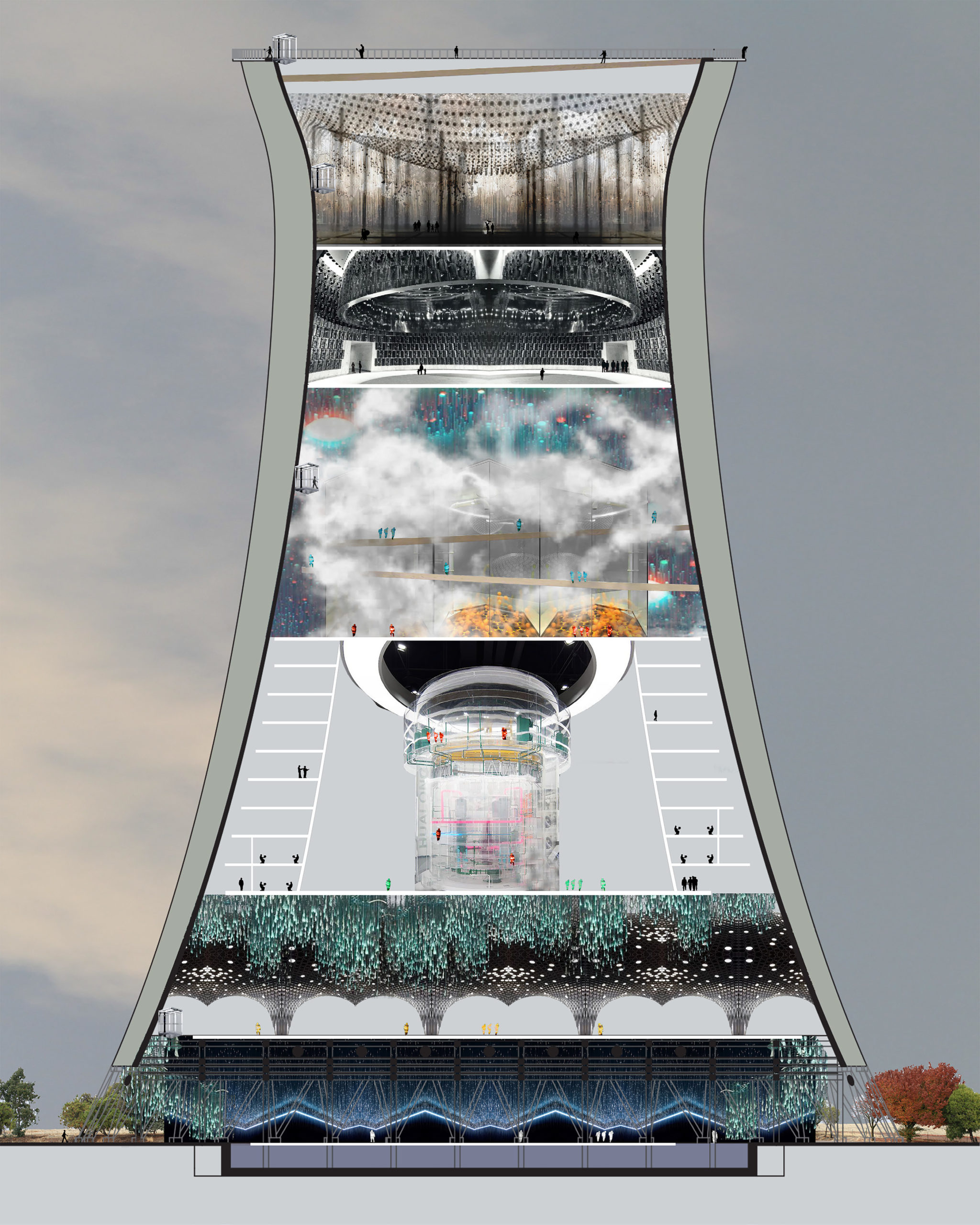Sublimity of Horror Architecture – Revitalizing a Nuclear Power Plant
Master Thesis by: Fan Pan – M.Arch / Thesis Advisor: David Gill
This project explores and offers a solution for the decommissioned Rancho Seco Nuclear Power Plant so that it may serve the public. After equipment related to the production of nuclear power is removed, the shell structure, designed to adapt to large machinery, sits empty and underutilized. This over-sized and surreal structure creates a sense of fear for visitors, forcing people to be aware of its presence. This proposal capitalizes on both what the power plant once was as well as its potential to transform into a landscape that engages with the public.
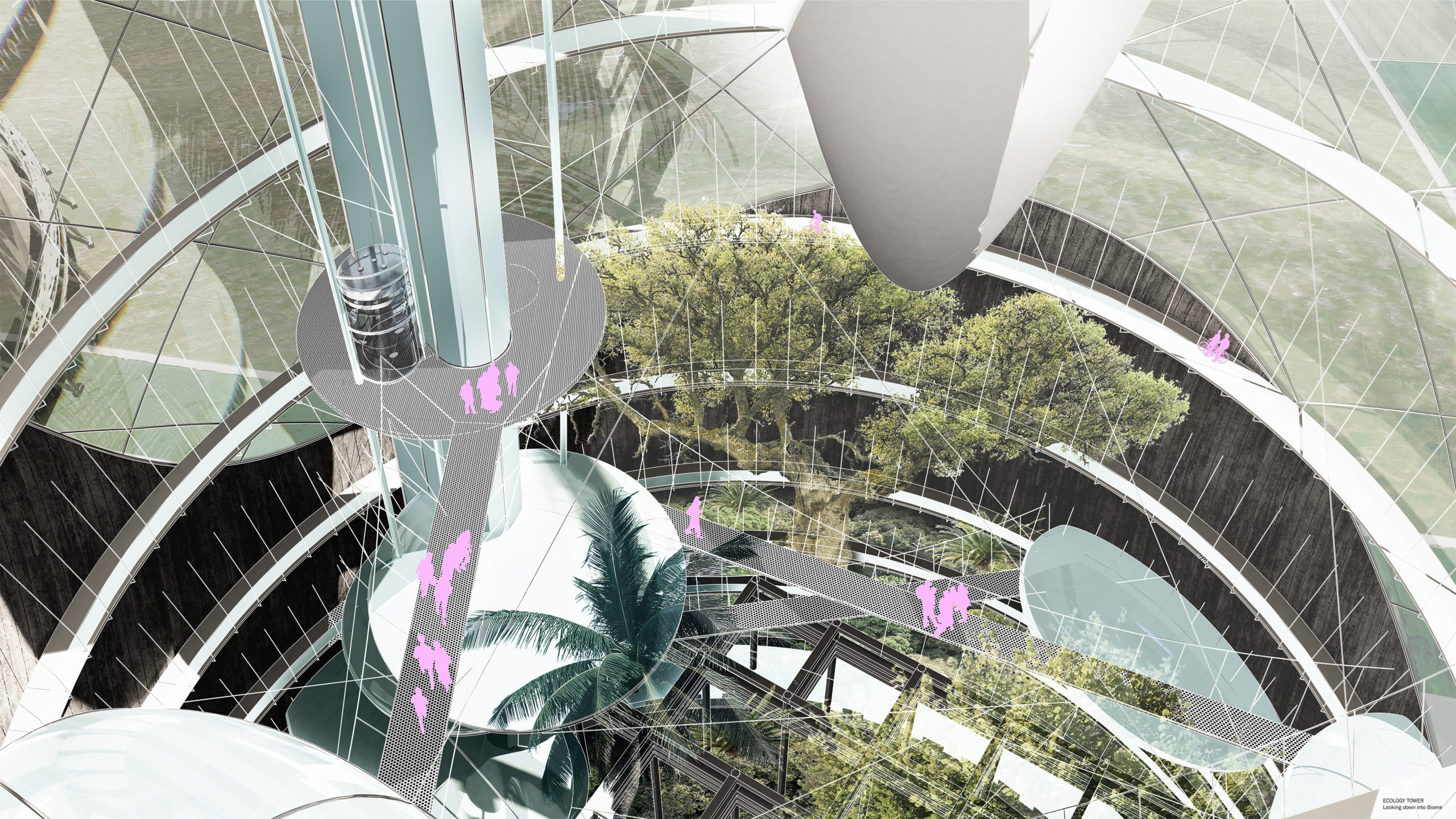
The proposed architectural solution breaks down the huge and non-human scale by introducing a series of unique experiences through new programs that focus on recreation, education, and research. The existing cooling towers incorporate additional programs that engage with the surrounding landscape.These programs include, more specifically, energy and climate research labs for science, exhibitions for education, bicycling and camping for recreation, a green economy matrix for businesses, and conference centers for political discussions. With architecture as the mediating platform, these programs will create a chance for people who are not familiar with the site and with energy production. People can gain knowledge on these important topics while, at the same time, interfacing with experts from different disciplines who are working together to develop sustainable solutions for our current and future energy needs.
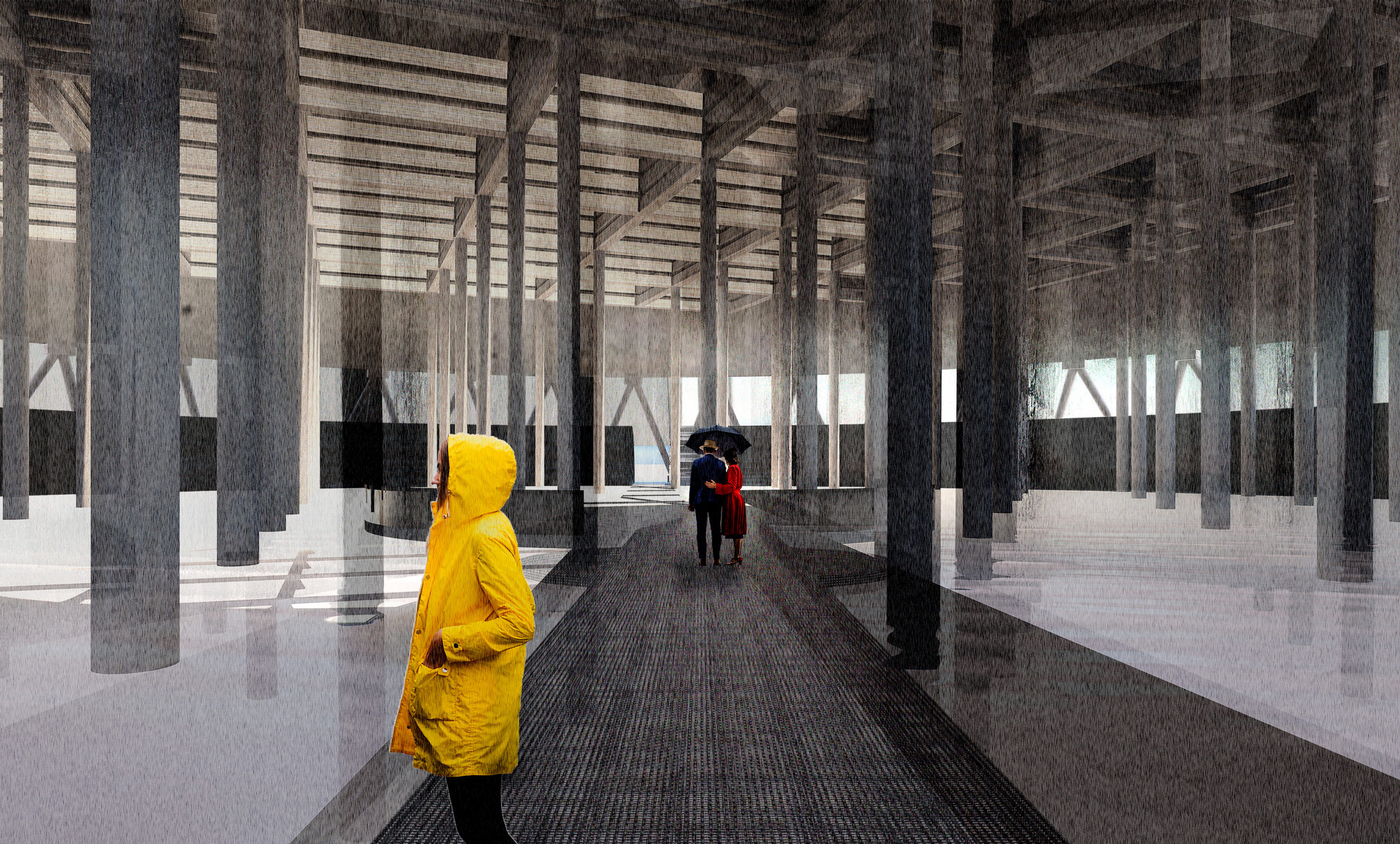
Nuclear Power Plant Cooling Towers
Our ability to control the energy-generating process of nuclear energy has led to the use of nuclear power plants throughout the world. Since the nuclear energy-generating process produces a large amount of heat that requires an enormous body of water to cool down the system, huge cooling towers are constructed to cool down the heated water before releasing it into the environment. Cooling towers have become part of the nuclear power plant typology, and they are now an icon of nuclear power plants. The cooling towers, the representation of nuclear power plants, serve as a warning to people about the danger of nuclear energy and a reminder of the horrors associated with nuclear meltdowns.
This thesis exploits the horror associated with nuclear power plant architecture and proposes a design to shift from horror to sublime. The chosen site, Rancho Seco Nuclear Power Plant, first opened in 1974, the year of the Arab nations’ oil embargo against the U.S. ended. It was put into operation to provide electricity for the increasing number of Sacramento County residents, and was decommissioned in 2009. Now that this industrial area is no longer using uranium to produce electricity, the heavy structures are left empty.
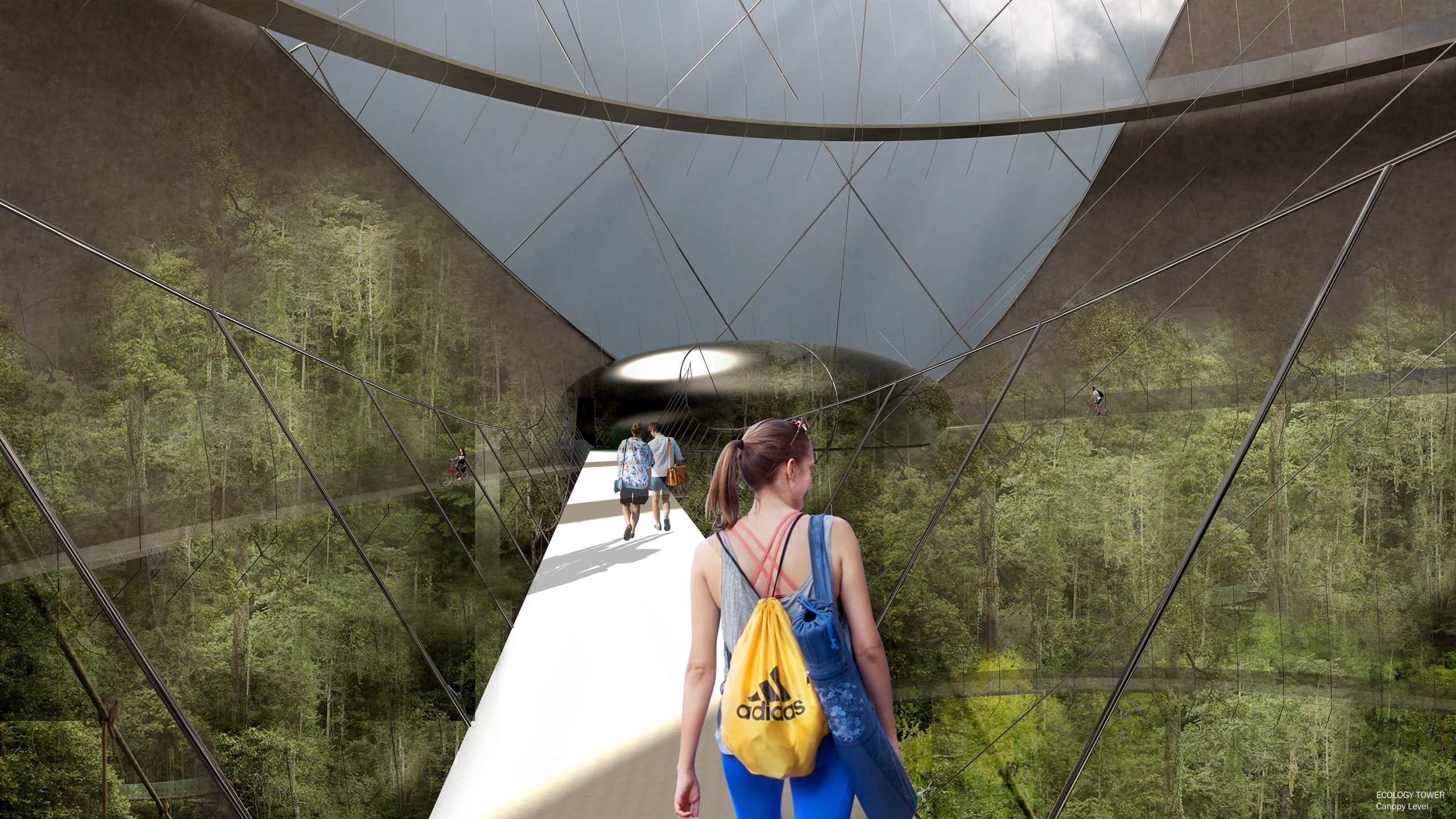
The remaining structure on site includes the cleaned-up reactor unit, two cooling towers, and a few office buildings. In addition to master-planning the surrounding landscape, the main design focuses on reutilizing the cooling towers. The site is vast, and the enormous scale of the towers awes the visitors at first sight. The original radioactive function alerts visitors about its destructive potential and its incredible electricity-generating ability.
